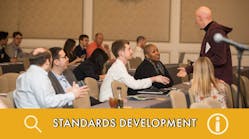New Space Station crew looking at yet more LED-based horticulture
A new crew rocketed up to the International Space Station last week ready to begin yet another LED-reliant horticultural experiment on the orbiting science lab. As part of their duties, the three U.S. and one Russian astronaut will help examine the effects of ultraviolet rays on plant growth.
They will also contribute to an ongoing project in which LEDs help to grow algae as a possible source of oxygen and food in space.
The UV project will take place in the Plant Experiment Unit operated by the Japan Aerospace Exploration Agency (JAXA, the Japanese version of NASA).
According to a NASA scientific summary linked through the agency's blog, the crew members will look specifically at how ultraviolet-B (UV-B) affects plant growth. The plant under investigation is thale cress (Arabidopsis thaliana), which is widely used in plant research including elsewhere on the space station, such as in a project in a NASA chamber looking at genetic modifications.
The new project “examines the effects of stress from microgravity and high UV radiation exposure and the combination of the two on plants at the molecular, cellular, and individual levels,” the scientific summary states. “Results could contribute to a greater understanding of plant growth in space and support development of improved plant cultivation technologies for the Moon and Mars.”
Using JAXA equipment, the crew will plant and water seeds. After about two weeks of incubation under LED illumination, they will irradiate half of the plants with UV-B in the 280 to 315nm range (NASA did not state whether the irradiation will be with UV LEDs or through some other means). The other half will not be irradiated. Later, the crew will harvest the thale cress and either freeze it or store it chemically for later analysis.
UV radiation is more present in space than it is on Earth, where the ozone layer filters out shorter wavelengths such as UV-C and the shorter end of the UV-B spectrum. Short UV wavelengths are particularly damaging to human skin and eyes. Space station astronauts are shielded from them by specially designed windows.
As with many ISS experiments, NASA will endeavor to apply results of the UV-B research to applications on Earth as well as in space.
“Long-term missions to the Moon and Mars require the capability to grow plants in space and limited gravity,” NASA stated in its summary. “This investigation contributes to the development of lunar and space agriculture.”
At the same time, NASA noted that “This investigation could reveal characteristics of plant growth that are masked by Earth’s gravity and provide insight into new technologies for growing plants in stressful environments on the ground.”
The four astronauts who arrived last Tuesday were NASA’s Matthew Dominick, Mike Barratt, and Jeanette Epps, along with Russian cosmonaut Alexander Grebenkin from Russia’s Roscosmos agency. They will stay for six months, undertaking a diverse set of experiments touching on, among others, neurodegenerative disorders and space-caused fluid shifts that cause head and eye aches.
The UV-B experiment will not be their only horticultural undertaking. They will also participate in a European Space Agency (ESA) project called Arthrospira that uses LEDs to help grow spirulina algae and determine its effectiveness as a possible oxygen and food source in space.
Dominick, Barratt, Epps, and Grebenkin replaced four other crew members who were preparing to depart for Earth today: NASA’s Jasmin Moghbeli, ESA’s Andreas Mogensen, JAXA’s Satoshi Furukawa, and Roscosmos’ Konstantin Borisov.
The ISS has a multitude of LED-based projects underway looking at not just horticulture but also circadian rhythms.
MARK HALPER is a contributing editor for LEDs Magazine, and an energy, technology, and business journalist ([email protected]).
Follow our LinkedIn page for our latest news updates, contributed articles, and commentary, and our Facebook page for events announcements and more. You can also find us on the X platform.

Mark Halper | Contributing Editor, LEDs Magazine, and Business/Energy/Technology Journalist
Mark Halper is a freelance business, technology, and science journalist who covers everything from media moguls to subatomic particles. Halper has written from locations around the world for TIME Magazine, Fortune, Forbes, the New York Times, the Financial Times, the Guardian, CBS, Wired, and many others. A US citizen living in Britain, he cut his journalism teeth cutting and pasting copy for an English-language daily newspaper in Mexico City. Halper has a BA in history from Cornell University.
![Form left to right: Roscosmos cosmonaut Alexander Grebenkin and NASA astronauts Mike Barratt, Jeanette Epps (upside down), and Matthew Dominick. They will be part-time botanists aboard the ISS for the next six months, using LED lighting. [Image available for use in the public domain - https://www.flickr.com/photos/nasa2explore/53570760432/] Form left to right: Roscosmos cosmonaut Alexander Grebenkin and NASA astronauts Mike Barratt, Jeanette Epps (upside down), and Matthew Dominick. They will be part-time botanists aboard the ISS for the next six months, using LED lighting. [Image available for use in the public domain - https://www.flickr.com/photos/nasa2explore/53570760432/]](https://img.ledsmagazine.com/files/base/ebm/leds/image/2024/03/65f09567f9ecfc001e240230-iss_uvbalgaecrew_nasa_comp.png?auto=format,compress&fit=max&q=45&w=250&width=250)




